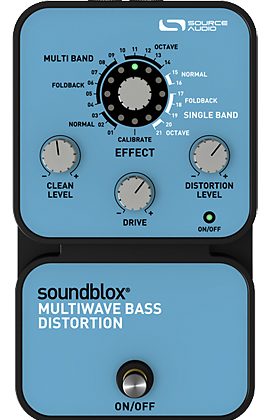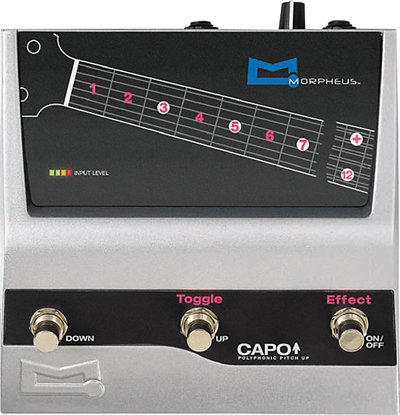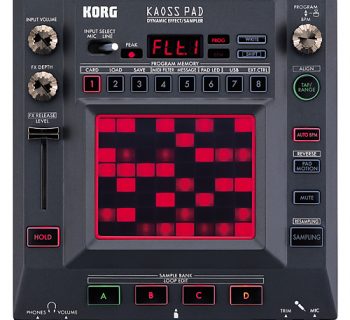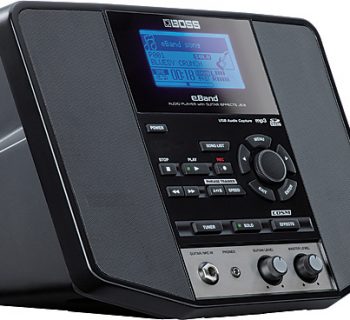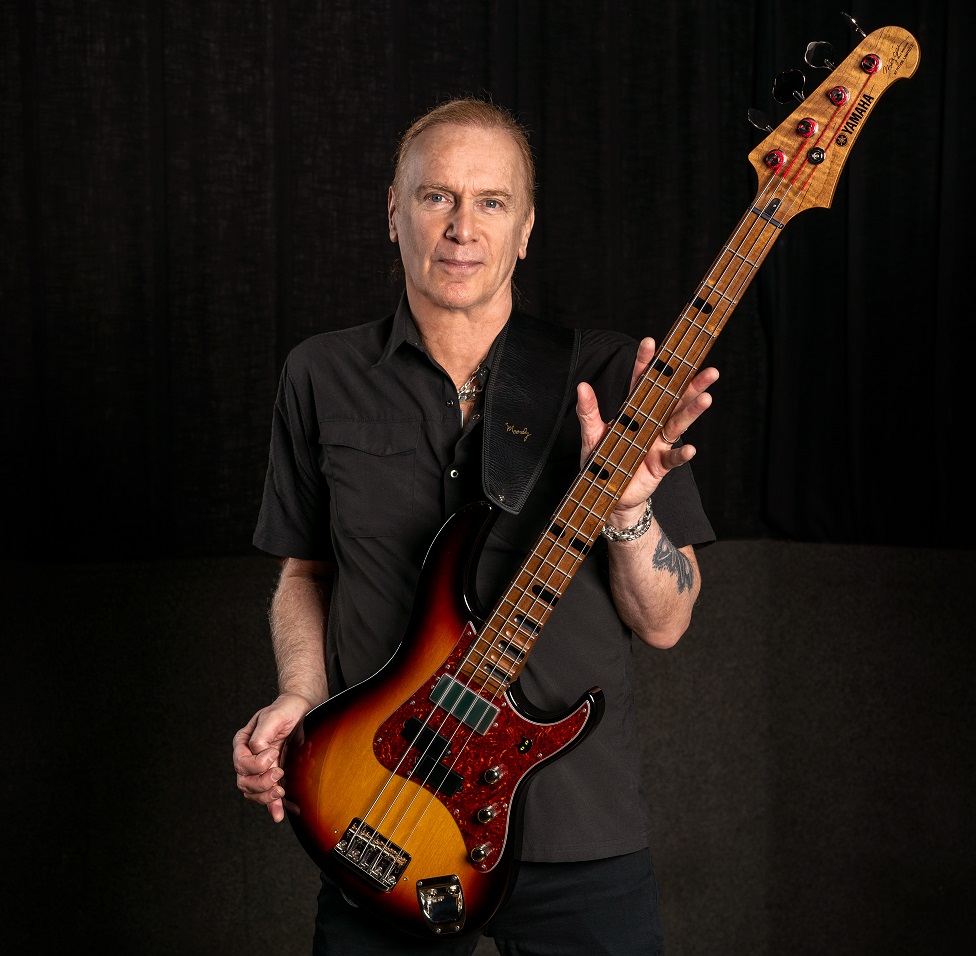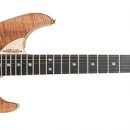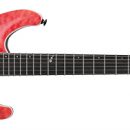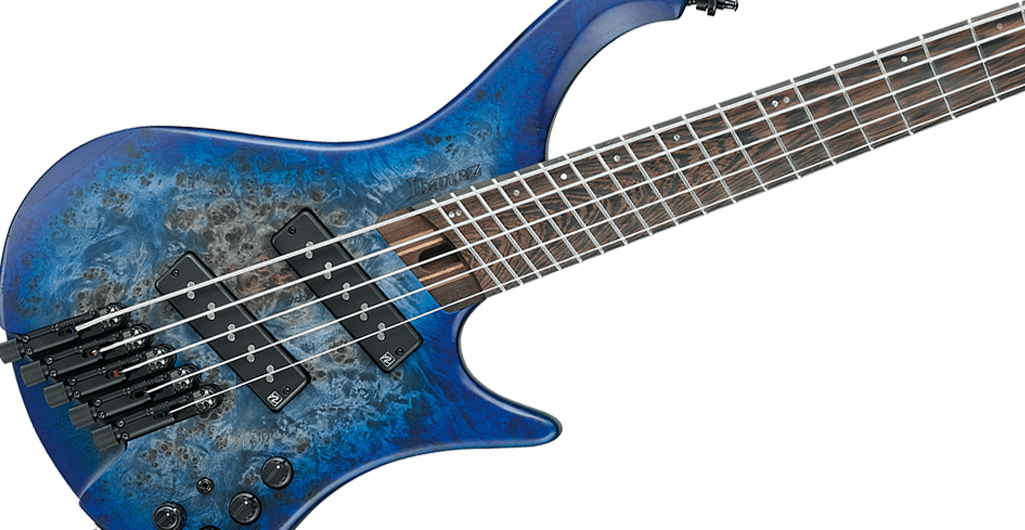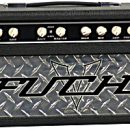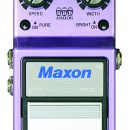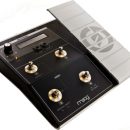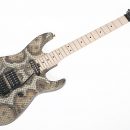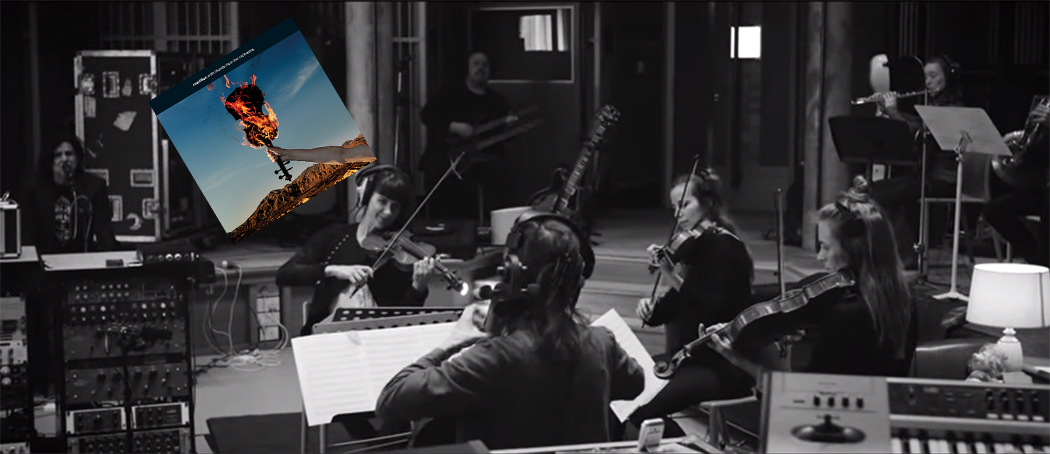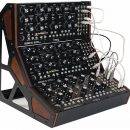 The key to great sounding distortion on the bass is definition. To maintain the role of the bass as the pulse in a track with distortion, the low end must be there. Whether you are playing a gut wrenching bass solo or just an aggressive metal track with distortion, the note definition must be there.
The key to great sounding distortion on the bass is definition. To maintain the role of the bass as the pulse in a track with distortion, the low end must be there. Whether you are playing a gut wrenching bass solo or just an aggressive metal track with distortion, the note definition must be there.
As much fun as it is to noodle around with a distortion pedal with your amp cranked, when you actually get down to playing with a full band or start recording tracks, a distorted bass track can easily get lost in the mix. Source Audio has taken this concept seriously in their Soundblox Multiwave Bass Distortion pedal. This pedal is a well-built stomp box with plenty of dirty distortions, subtle overdrives, and edgy synth-like tones to satisfy any bass distortion fanatic.
| Category | Value | Rating |
| Features | 20% | |
| Usability | 25% | |
| Sound | 25% | |
| Documentation & Support | 10% | |
| Price | 20% | |
| OVERALL RATING = 3.6, which earns it a WIHO Award! 3.6 stars or better: Outstanding, WIHO Award 3 stars or better: Worth considering 2 stars or better: Suited to specific needs 1 star or less: Not recommended |
||
Most importantly, though, because of its unique multiband and foldback distortion algorithms, and the ability to mix the direct bass signal in parallel with the distorted signal, you can easily dial in a multitude of usable distortion sounds with attack and definition that are required to hold that crucial bottom end.
Features
The Multiwave Bass Distortion pedal contains a collection of distortion effects specifically optimized for the bass frequency range, rich with some familiar sounds as well as many new voices born from its two unique signal processing algorithms.
The first algorithm is called Multiband distortion, which takes the input bass signal and divides it up into ten frequency bands similar to a graphic equalizer. The distortion effect is applied separately to each of the frequency ranges and then recombined together to achieve the final output signal. By comparison, traditional distortion effects take the entire signal and process it as a whole.
The second algorithm is called Foldback. Most distortion circuits drive the input signal to the point where the signal reaches a maximum level. The signal ultimately clips into a square wave type output, which is known as distortion. With Foldback, as the signal is increased and approaches its limit, instead of compressing, the signal is decreased as the maximum is reached. It then oscillates by increasing again, then decreasing, and so on. We will discuss the sonic characteristics of these settings later.
Bass distortion fanatics have a choice of twenty-one presets that can be selected by the rotary dial on the face of the pedal. The presets are grouped into two sections: Multi band mode and Single band mode. The various Multi band settings are noted by the black lettering and refer to the Multiwave algorithm described above. The Single band mode settings are written in white lettering and refer to the traditional type of distortion where the whole signal is processed all at once.
Each of the two groups are then broken down into three sections: Normal (single band), Foldback, and Octave. The Normal setting refers to the traditional style of distortion. Things start to get more interesting when you move into the Foldback section as described above. Beyond that is the Octave setting, which adds higher octaves into the mix. The remaining preset position is labeled Calibrate, which is used in conjunction with the Hot Hands accessory (not included).
Note: Check out Source Audio’s Hot Hands motion/expression sensor, which gives you dynamic and expressive real-time control over your tone through hand motion!
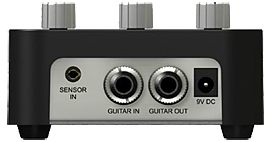 The Multiwave pedal has three additional knobs on the front panel. The center knob, Drive, enables the user to adjust the amount of distortion. The two remaining knobs to the left and right are labeled Clean Level and Distortion Level. These knobs give you the ability to independently balance the amount of clean signal with the amount of distorted signal.
The Multiwave pedal has three additional knobs on the front panel. The center knob, Drive, enables the user to adjust the amount of distortion. The two remaining knobs to the left and right are labeled Clean Level and Distortion Level. These knobs give you the ability to independently balance the amount of clean signal with the amount of distorted signal.
The rear panel is very straightforward with Guitar In and Guitar Out ¼” jacks, a power input connector for a 9V, 110mA power supply, and a connection for the Hot Hands sensor. The unit also runs on four AA batteries with an accessible, quick-release battery door on the bottom of the pedal.
Audio specs are top flight, with 56-bit (proprietary) DSP and 24-bit analog-to-digital converters. The casing is made of a lightweight but durable plastic with screwed-on rubber feet, and is relatively compact at 7”L X 4”W X 2”H.
Usability
From the description alone of the Multiwave Bass Distortion pedal, you would think that this pedal would be very complicated to use. Fortunately, all of the complexity is taken care of on the inside. The diverse sounds available in this pedal with only four knobs to control it are, in fact, pretty amazing. The Effect rotary dial turns very easily with a nice positive detent at every preset to allow you to scroll effortlessly throughout the entire range. Each detent on the rotary dial is marked radially with LEDs so you can easily see which preset is selected. This sure beats a knob with a line on it, as the last thing you need to be doing at a gig is getting on your hands and knees with a magnifier and flashlight to check your settings!
Even with this pedal, though, it was sometimes challenging to read the small print accompanying each setting, but with twenty-two positions, we doubt they could write things any bigger. The LEDs prove extremely valuable in this design, along with the On/Off LED.
Many bass-optimized distortion pedals have a single knob that allows you to adjust the ratio between the clean signal and the effected signal. We found the separate Clean Level knob and Distortion Level knob to be very intuitive and useful. There was no difference volume-wise between the clean bass signal with the effect off and the clean bass signal with the effect switch engaged and the Distortion Level knob turned all the way down. This gives you a great reference point between the clean and effected signal. It is then very simple to start adding the distorted signal in by turning the Distortion Level knob gradually clockwise. Depending on the desired sound, you can adjust the Level knobs accordingly and adjust the amount of distortion via the Drive knob.
The overall packaging of the Multiwave Bass Distortion Pedal is well designed as well. Though it is larger than your typical BOSS-sized box, it is neither cumbersome nor obtrusive. It is fairly lightweight but sturdy, and we felt we could step on the Carling-style metal footswitch with confidence.
The quick release battery compartment on the bottom panel was very handy, though we expect many players will power this from their pedalboard power supply.
Sound
A functional yet musical distortion effect is probably one of the most difficult effects to design for the bass guitar. For us, the biggest challenge is to be able to use the distortion effect… effectively! To that end, we fired up the Multiwave Bass Distortion pedal and plugged into an Ampeg SVT-4 Pro with a 4X10 cabinet. For basses, we used an MTD-635, a Fender Jaguar bass, and a Hofner Club bass with flatwounds to cover a number of styles and applications.
The Multiwave Bass Distortion pedal is, by far, not a one trick pony. We started with the Normal functions, which were the closest to traditional distortion. We were able to get a wall of mud distortion — especially with the Hofner; all the way up to a pleasant buzz saw effect. The Multiband mode clearly gave the sound more definition as we scrolled through the presets. This was most notable when comparing different basses or when we swept the tone controls on the instruments themselves.
As we journeyed into the Foldback settings, we started to touch on the true character of this pedal. By experimenting with the various presets we were able to get everything from subtle, distorted, auto-wah sounds to almost synth-like voices. The Drive knob brought each setting from subtle to more intense. We were also able to stumble upon different sounds by adjusting the bass volume and tone control. By adding the additional range in the Octave settings, the sound became even more complex.
We would have liked to have more control over the presets in order to experiment more with creative bass distortion sound design, but that might prove overkill for the typical bassist who just wants good, useful distortion sounds — which this pedal packs plenty of just as it is.
The Clean level and Distortion level knobs were key to getting the right sonic balance. It is extremely important to be able to dial in the clean/direct bass guitar track to maintain the low end that is often lost when processing through distortion.
Finally, it should be noted that if you have been around the block a few times when it comes to distortion pedals (as we have), you will really appreciate the lack of noise. This is one quiet distortion pedal!
Documentation and Product Support
While we could’ve used a magnifying glass to read the documentation that came with the Multiwave Bass Distortion Pedal, all of the necessary operational information was there, along with some interesting explanations of the theory behind the design. We would like to see a better description of the preset parameters, though.
The Source Audio website has plenty of information on the product as well as some very well done demo videos to help inspire and get you started.
Price
The Source Audio Soundblox Multiwave Bass Distortion Pedal (MSRP $189) sells for approximately $120. We feel that this is an excellent price for such a well-designed piece of gear that delivers such a wide range of useful distortion sounds.
Other Comments
Source Audio also offers the Multiwave Bass Distortion Pro pedal, which adds six memory presets (via three footswitches), MIDI control over parameters, and a seven-band graphic EQ.
Contact Information
Source Audio
www.sourceaudio.net
Evaluation Short-List
- Tech 21 NYC Red Ripper
- Electro-Harmonix
- XO Bass Big Muff
- Pi Pigtronix Disnortion

